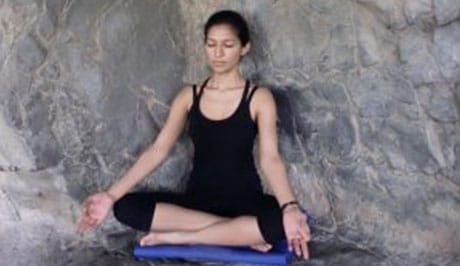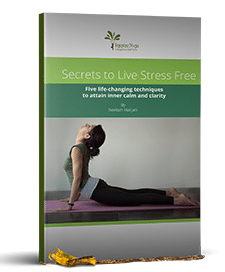The breath is a fundamental aspect of any yoga class. Deep and slow breaths intensify the practice and increases the potency of the poses. You will find you are able to hold each pose much longer and stretch further with fuller breaths. When the practice gets intense our natural instinct is to either hold the breath or start panting, both of which deplete your energy much faster. Slow deep breaths optimize oxygenation to each cell of the body, increase lung capacity and improves blood circulation.
Yoga Techniques That Develop Your Breathing Styles
Unfortunately we have never been taught how to breathe correctly, we have taken our respiratory system for granted. In yoga, we are taught how to breathe to maximize our lung capacity. We categorize the stages as below:
- Abdominal Breathing
- Thoracic Breathing
- Chest Breathing
Abdominal Breathing
Place you hands around your navel and feel the movement of the abdomen. Feel the diaphragm push the abdomen outwards during the inhalation and feel the diaphragm lift up drawing the abdomen inwards during the exhalation. Continue to feel the movement of the breath around the abdomen for 20 breaths.
Thoracic Breathing
Place your hands at the sides of your body, halfway along your torse, you should feel the side of your ribcage. As you inhale feel the ribcage expand laterally, as though the are wings fanning out. As you exhale feel the contraction inwards, drawing inwards, towards the centre of the body. Continue to feel the movement of the breath around the ribcage for 20 breaths.
Chest Breathing
Place you hands around your collarbone and feel the movement of your chest. Feel the sternum rise and the chest broaden during an inhalation. Feel the sternum move down and the chest move inwards during an exhalation. Feel free to lift your shoulders towards your ears as you inhale creating more space around your chest, and release them down as you exhale. Continue to feel the movement of the breath around the chest for 20 breaths.
A full yogic breath involves all 3 components. We inhale first into the abdomen, then the ribcage and finally the chest, feeling the expansion of a full breath in. We exhale first from the chest, then the ribcage and finally the abdomen, feeling the contraction of a full breath out. After adequate practice of breathing in this way, the next step in to hold the breath after the full inhalation and after the full exhalation. It is important to be guided by a competent teacher at this stage because premature breath retention puts pressure on the cardio vascular system. This breathing technique is a powerful tool often used to reduce symptoms of anxiety and depression as it brings a sense of calm and inner poise. Ten minutes of continuous yogic breaths will leave you feeling full of energy and vibrancy.

